Premium Only Content
![[GERMAN LANGUAGE VERSION] Ex-CIA Officer John Kiriakou on the CIA Units that Perform Assassinations & Extraordinary Rendition](https://1a-1791.com/video/fwe2/40/s8/1/Y/d/a/t/Ydatz.lR4e-small-Ex-CIA-Officer-John-Kiriako.jpg)
[GERMAN LANGUAGE VERSION] Ex-CIA Officer John Kiriakou on the CIA Units that Perform Assassinations & Extraordinary Rendition
Timestamped Summary; Ex-CIA Officer John Kiriakou on CIA Assassination & Rendition Units:
- 0:00-0:30 - Definition of extraordinary rendition: Parachuting into location, stealing a van, snatching someone off the street, meeting helicopter at departure point, and flying target to destination. Described as "very dangerous" work.
- 0:30-1:30 - Special Activities composition: Almost none are career CIA officers. They had long successful careers in special forces—Navy SEALs, Army Rangers, Delta Force. Post-9/11, they were initially seconded to CIA for quick strike operations. Over the years, agency made many of them official employees under global services, special activities division, or counterterrorism center. Others retired from military and work at CIA as contractors.
- 1:36-2:21 - Operational secrecy: What special activities units do is "so secret" that they don't talk about it. Everyone in office knows what they're doing but nobody mentions it. Their job is to "kill or kidnap and render anybody who might be a threat to the United States, to an American citizen or to an American installation."
- 2:21-3:00 - Mission objectives and mistakes: At top of food chain, goal is killing people like Osama bin Laden and al-Zawahiri. However, mistakes get made—people being snatched off streets and rendered to third countries for torture, only to have that country's intelligence service report back "this is the wrong guy" after months of merciless torture. This has "happened repeatedly."
- 3:00-3:46 - Constitutional conflict: Former Deputy Director for Operations Jose Rodriguez said you need someone willing to make tough decisions. However, as American government officials who live by rule of law and Constitution, "just going out there wantonly murdering people and kidnapping people and torturing people, that's not upholding the Constitution."
- 4:01-4:42 - Special Activities structure pre-9/11: Before 9/11, there was one division within CIA's Directorate of Operations called Special Activities Division. They would "go do things in the cover of darkness that nobody talked about."
- 4:53-5:34 - Post-9/11 expansion: After 9/11, Counterterrorism Center (CTC) created its own special activities group. These were guys on loan to CTC who would specifically target terrorists planning operations against US. Kiriakou left before they figured out long-term structure of who would do what, but both organizations still exist.
- 5:30-6:29 - Kidnapping operations focus: A lot of what special activities guys do in CTC is not assassinations but kidnappings. Operations involve parachuting in somewhere, stealing a van, snatching somebody off street, meeting helicopter at departure point and flying target away. Very dangerous work because they're not snatching people in Dubai or Abu Dhabi, but in places like Benghazi, Khartoum, or Karachi. Many moving parts.
- 6:16-6:29 - Unknown casualties: If CIA people are being killed in these operations, "we wouldn't even know it" because they get their star on the wall of honor with no name attached. "We don't really know what's going on with these groups."
- 6:32-7:04 - Military loan program: People were on loan to CTC from the military, not from special activities division. This included working with JSOC components, mainly SEAL Team 6 in programs like Omega where CIA and JSOC worked together.
- 7:04-8:23 - CTC office layout post-9/11: Big bullpen with 150 people in cubicles. So many people they had to name the aisles—"Bin Laden Boulevard," "Hezbollah Highway"—so people could say where they sat. Around perimeter were private offices for chief CTC, deputy chiefs, and group chiefs. Guys on loan from SEAL Team 6 never interacted with regular staff, "not even so much as a good morning." They appeared after 9/11, would vanish for weeks at a time, return whispering to each other. "Pretty easy to figure out who they were and what they were up to."
- 8:25-8:37 - Paramilitary transformation: Asked when CIA turned into paramilitary organization after 9/11, Kiriakou's answer: "The day after 9/11. Seriously, the day after 9/11."
- 8:40-9:25 - Cofer Black's speech: An hour after 9/11 attacks began, CTC chief Cofer Black stood on chair outside his office. In dead silence with hundreds present, he said: "Today, we're at war and we're all going to have to fight. Not all of us are going to come home. So if you want to walk out now, walk out and no one will think less of you." One woman walked out, her branch told deputy director for analysis they had no confidence in her leadership, and she was removed.
- 9:25-9:53 - Mission shift: Everyone volunteered. "Literally within 24 hours" they began transition into paramilitary force. No more focus on recruiting spies to steal secrets—"it was just about destroying al-Qaeda, destroying it permanently."
- 9:53-11:02 - Al-Qaeda's quick defeat: Among core al-Qaeda based in Afghanistan, "they were destroyed by Christmas" 2001. Senate Foreign Relations Committee study (probably should have been classified) stated that by end of 2001, there were only 25 active al-Qaeda members still in Afghanistan. "It had been destroyed." Everyone else who made it across border to Pakistan was being captured. Regional franchises (Arabian Peninsula, Islamic Levant, North Africa) were al-Qaeda inspired but not coordinating operations. They hadn't yet killed bin Laden or Zawahiri, but "in terms of al-Qaeda as a fighting force, it was done by Christmas of '01."
- 11:02-11:39 - GRS program origins: Kiriakou had already left CIA when Global Response Staff (GRS) program was stood up. He was dating a woman whose soon-to-be ex-husband was in GRS. When she mentioned it, he asked "What's GRS?" She looked at him funny, told him, and he said: "Oh they've made it official." Before it was official, it was just informal: "Hey, you doing anything for the next week? We're going to need you to do this thing. Don't tell anybody." Now it's an office.
- 11:41-12:05 - GRS mission: GRS stood up as security for case officers, especially related to operating in Green Zone in Baghdad where most of them did their work. Green Zone was "easily infiltrated" and moving from point A to point B meant "you took your life into your hands every time."
- 12:05-12:36 - GRS personnel requirements: "You have to be a brave son of a gun to do a job like that." That job requires being truly fearless. "Your job is literally to throw your body in front of the other guy so the other guy doesn't get killed and can complete the meeting." Described as "thankless" work.
____________________________
Original Source Attribution:
'The One CIA Unit No One Talks About | Ex-CIA Officer John Kiriakou' |
Dalton Fischer Podcast | Sep 5, 2025 | https://youtu.be/GRrm29eEzQ0?si=fmOB48UiOmiJ5v4w
Full interview with John Kirkakou: • https://youtu.be/t3FxH39oYsA?si=JfqWjiYbSvibQ9CD
___________________________
*** COPYRIGHT DISCLAIMER: This video and channel content are for educational purposes and use copyrighted material (clips) under the Fair Use Doctrine (Title 17 U.S.C. Section 107). This channel IS NOT MONETIZED, and all content is used for commentary, criticism, news reporting, or educational purposes, and falls within the guidelines of fair use. No copyright infringement is intended. All rights to the original content belong to the respective copyright holders. If you wish to have your content removed, please email us through your channel's email address, or contact me directly at [email protected]. ***
-
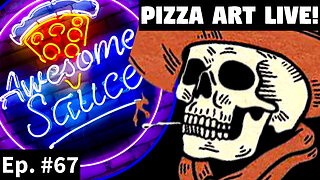 4:23:32
4:23:32
EricJohnPizzaArtist
1 day agoAwesome Sauce PIZZA ART LIVE Ep. #67: HALLOWEEN SPECIAL tribute to “Need to Breathe”
43.3K9 -
 2:26:26
2:26:26
Nerdrotic
7 hours ago $0.21 earned3I/Atlas : A Cosmic Horror or a New Interstellar Understanding? | Forbidden Frontier #122
186K16 -
 54:56
54:56
Sarah Westall
5 hours agoHidden Biblical Writings: Evidence Based Investigation, Worlds First Collection w/ Matthew McWhorter
16.5K13 -
 3:08:48
3:08:48
megimu32
4 hours agoOTS: Great Scott! How Back to the Future Changed Movies Forever
16.1K8 -
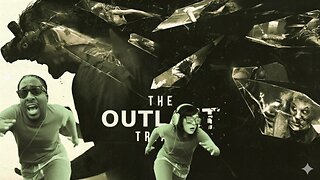 LIVE
LIVE
CassaiyanGaming
3 hours ago🟢LIVE - The OUTLAST Trials with JahBless & CatDog
148 watching -
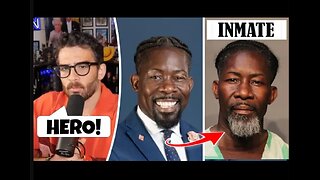 10:54
10:54
Nate The Lawyer
2 days ago $1.20 earnedNEW Charges & Lawsuit For Fake Doctor Illegal Who Ran Schools For Decades
34.1K29 -
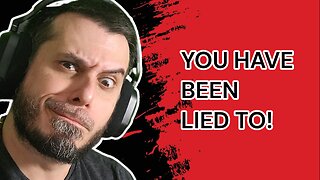 2:34:44
2:34:44
Joker Effect
3 hours agoSTREAMER NEWS: Adin Ross, LupLupka, SideScrollers, N3on, TrainwrecksTv, Cuffem, WestCol, BottedWTF.
11.8K6 -
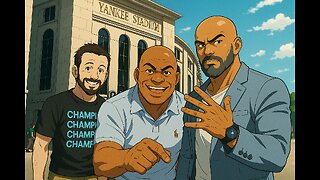 3:04:40
3:04:40
IsaiahLCarter
1 day ago $0.18 earnedWill New York City Choose Communism? || APOSTATE RADIO 032 (with John D. Macari)
22.9K9 -
 2:31:41
2:31:41
Illyes Jr Gaming
6 hours agoRetro Sports Game Night NHL 94
6.73K3 -
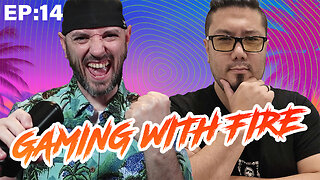 1:22:31
1:22:31
HELMETFIRE
3 hours ago🟢GAMING WITH FIRE EP14🟢
4.45K8